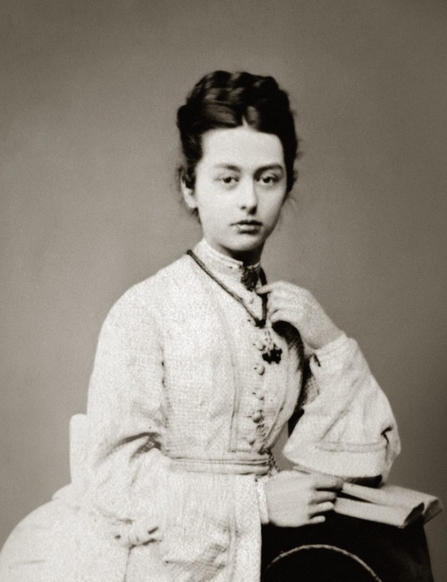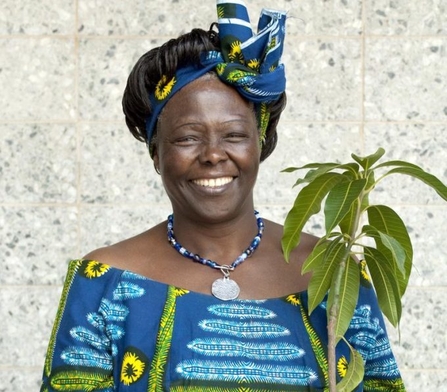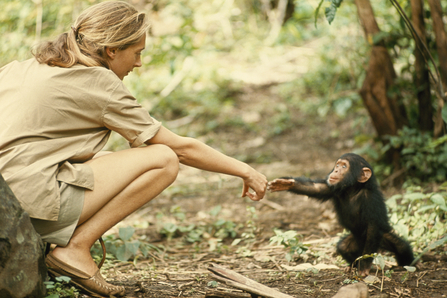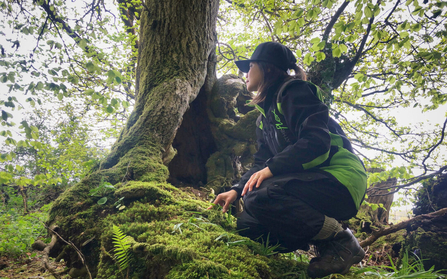Conservation has long been a male-dominated domain. Early studies into the natural world were conducted by male philosophers such as Aristotle, who began the early classification of animals but also believed that “the relation of male to female is by nature a relation of superior to inferior and ruler to ruled." Unfortunately, these attitudes were not left behind with the ancients. Established in 1858, the British Ornithologists’ Union (BOU) ignored the campaigns of Emily Williamson (who went on to become the co-founder of the RSPB) and refused female membership until 1910.

Credit: The Royal Society for the Protection of Birds (RSPB)
But despite oppression and belittlement, women have still made a significant impact. In 1889, outcast by the BOU, Emily Williamson (1855-1936) established the all-female Plumage League, aiming to end the use of bird feathers in fashion. Joining with Etta Lemon (1860-1953) and Eliza Phillips (1823-1916), the group became the Society for the Protection of Birds in 1891. The society soon gained success, receiving a royal charter in 1904 and celebrating the passing of the 1921 Importation of Plumage (Prohibition) Act. From then onwards, the RSPB began focusing on land management for bird welfare, purchasing its first reserve in 1930.
Someone you might recognise for her writing rather than her conservation work is Beatrix Potter (1866-1943). Crafting her children’s books around wildlife, Potter’s care for nature stretched into academia. In 1897, her paper on mycology was accepted by the Linnean Society of London. However, she was denied attendance at the reading! After purchasing Hill Top Farm in the Lake District in 1905, Potter became vocal on local conservation issues. Upon her death in 1943, Potter donated 4000 acres to the National Trust - land which now makes up a significant proportion of the Lake District National Park.

Credit: Patrick Wallet
Outside of the UK, Kenyan-born environmentalist Wangari Maathai (1940-2011) developed an early respect for the environment, going on to achieve a PhD in Veterinary Anatomy in 1971. In 1976, Maathai founded the Green Belt Movement, aiming to stop deforestation and include rural women in tree planting. The project protected the livelihoods of local communities who relied on forest resources and, in recognition, Maathai received a Nobel Peace Prize, becoming the first African woman to do so.
Judy Ling Wong CBE OBE, a Hong-Kong born environmentalist, founded the Black Environment Network in 1987 to promote inclusion and diversity in environmental industries. Awarded an OBE in 2000 for her work towards multi-cultural participation in conservation, Wong was recently included in the Forbes List of 100 Leading Environmentalists in the UK.

Credit: National Geographic Creative/ Hugo Van Lawick
Of course, we cannot discuss female conservationists without mentioning Jane Goodall, who has researched chimpanzees in the Gombe Stream National Park, Tanzania, since 1960, making the ground-breaking discovery that chimps can make and use tools. In 1997, Goodall co-founded the Jane-Goodall Institute to spread awareness of conservation issues.
TV-presenter and TWT President Liz Bonnin became passionate about increasing public awareness of nature after completing a Masters in Wild Animal Biology, where she studied tigers in Nepal. Bonnin has gone on to present programmes such as Blue Planet Live and Drowning in Plastic.
And now we have a force of young, up-and-coming British conservationists.
British-Bangladeshi environmentalist, speaker and birder Dr Mya-Rose Craig began writing about conservation issues on her blog, ‘Birdgirl’, when she was just 11. In 2014, she produced a blog for the American Birding Association documenting the oil spill on the Sundurbans mangroves in Bangladesh, helping to raise $35,000 for the clean-up effort. Since 2016, Craig has been the president of her self-founded organisation, Black2Nature, working to encourage equal access to nature for minority groups.
Meanwhile, Scarlett Westbrook (19) from Birmingham is the youngest person to be awarded a qualification in environmental policy, achieving an A Level in Government and Politics at 13. Since then, Westbrook has taken her cause directly to the British government, writing the first student-led bill asking Parliament to change the Education Act in favour of teaching about climate change in schools across a range of subjects.

Credit: Cheryl Duerden
On the practical side of conservation is forester Cheryl Duerden. Born in Singapore, Duerden moved to the UK after becoming invested in conservation. Currently an officer for the Royal Forestry Society, she delivers woodland conservation management. Her experiences of being a woman in forestry are explored in her blog, ‘In a land of giants: Confessions of a tiny lady working amongst trees.’
There is still some distance to travel. In 2020, the IUCN reported that women held just 15% of leading roles. If the contributions of women to conservation and nature studies were properly valued, our understanding of conservation issues as a whole would grow. It is time to celebrate and promote women in conservation!
Lucy Smith
Nature Restoration Trainee
Member of the SWT Youth Action Committee
References
- Aristotle’s ethics and farm animal welfare — University of Edinburgh Research Explorer
- Plato and Aristotle on Women: Selected Quotes (thoughtco.com)
- Emma Turner : a life looking at birds | BTO - British Trust for Ornithology
- RSPB History: From Humble Beginnings to Thriving Today
- RSPB's Emily Williamson: The woman who saved a million birds - BBC News
- https://www.nationaltrust.org.uk/discover/history/people/beatrix-potter
- https://www.thebristorian.co.uk/womens-history-month/beatrixpotter
- https://www.aaihs.org/women-of-color-consciousness-and-the-global-environmental-movement/#:~:text=Circa%201920%20and%201954%20(Wikimedia,larger%20project%20that%20is%20environmentalism
- Judy Ling Wong CBE | BERA
- Judy Ling Wong - Wikipedia
- About Liz — Liz Bonnin
- Jane Goodall | Biography, Awards, Institute, Books, & Facts | Britannica
- About Mya-Rose Craig - Birdgirl (birdgirluk.com)
- Climate change: First bill written by children on climate education - BBC News
- International Women's Day 2022: An Interview with Cheryl Duerden - Royal Forestry Society (rfs.org.uk)
- https://www.iucn.org/news/gender/202103/new-data-reveals-slow-progress-achieving-gender-equality-environmental-decision-making

